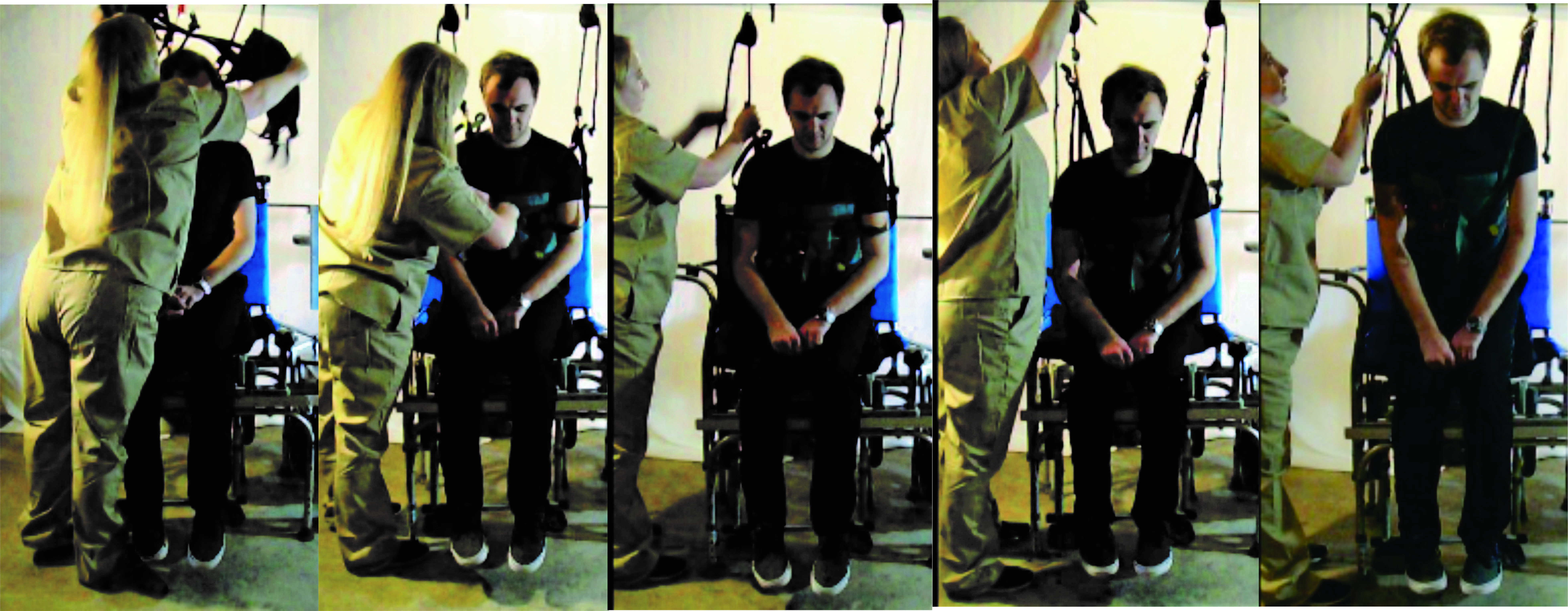

Put on Vest Tighten Ropes Pull Levers (Raise Person to Transfer)

|

Put on Vest Tighten Ropes Pull Levers (Raise Person to Transfer)
|
Hoisting and Mobility Device Disclaimer: Aging-At-Home.org claims no medical or engineering expertise, and seeks only to share information we have found useful with others. Any use of the information provided is up to others, and we assume no liability for such use. This website is for information purposes only. This information is not provided for the purpose of diagnosing, treating, mitigating, or preventing any type of disease, disability, or medical condition. People in the Home
The current methods and devices that help caregivers care for non-ambulatory or mobility-challenged people seem designed to force people into nursing homes as they become increasingly dependent and lose mobility. The offerings of transfer/mobility device companies are very limited in both home and facility use but home caregivers have few or no choices. The transfer device offerings that permit showering and toileting for disbaled people who cannot support their own weight and are usable by a single caregiver do not seem to exist at all. Caregiver burnout is common as basic activities of daily living (ADLs) are unnecessarily slow, dangerous, and labor intensive. Caregiver injuries are also a serious issue as almost 50% of nurses complain of chronic back pain that results primarily from lifting and repositioning immobile or mobility-challenged people. Such severe limitations negatively affect literally millions of older and disabled people, and their caregivers. Medicare and Medicaid are spending over $200B on diseases that lead to loss of cognitive function such as thinking and remembering for those over age 65 according the report 2022 Alzheimer's Facts and Figures (See figure 13 on P. 63) published by Alzheimer's Foundation (www.alz.org). And this class of diseases is just one of many diseases that seriously limit mobility. Virtually all this money goes for basic patient care since there is no medical treatment for the different forms of diseases that cause cognitive impairment. And the vast majority of funds goes to pay for nursing home care because the later stages of these diseases make its victims unable to communicate and take directions (they cannot assist their caregivers during transfer and are thus fully dependent). They therefore become bed-bound in the home environment as the disease progresses due to the lack of tools and devices to transfer them from the bed and into wheelchairs. Nursing homes (LTC) become the only option at a cost averaging over $90K per resident per year. As the US and the world population ages, such huge and rapidly increasing costs are unsustainable, and threaten the long term financial health of essential government healthcare programs. These include Medicare, Medicaid, and the VA in the US, and other national healthcare systems such of Britain's NHS and Canada's "Healthcare Canada" system.
Alternative methods and prototypes need to be explored.
The Aging-At-Home device represents an example prototype of what might
work to address this extraordinarily serious and expensive unmet need.
home | basic design | V1.0 parts and directions | V2.0 parts and directions | videos | conclusion Copyright © 2022, Towersgreen, LLC |